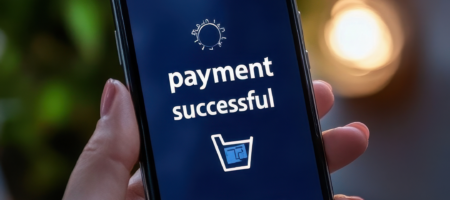Impacted by covid19, everything is taking longer than expected, whether that’s waiting in line at a retail store or boarding a plane. We’re even having to queue to shop online. Written by intO’s Jonny Jiang, this article explores how service design might try to bridge the gaps that WAITING is introducing to customer experiences in the retail and hospitality sectors.
Big queues equate to big problems. When countries around the world urged citizens to socially distance in order to flatten the pandemic’s curve, most of us accepted that queues were a necessary consequence. But as we, globally, begin to try to return to a version of life that we recognise, queues and crowds will be bad news for businesses, public spaces – and people. Aside from the on-going health concerns, in many societies we’re simply not used to having to wait for anything! However, while increased periods of waiting during logistics create gaps in experiences, they also forge new opportunities. I’ve been thinking about how service design can establish a new set of experiences that elevate brands and businesses above their competition by providing real value to users and customers.
One obvious approach is to ‘simply’ move as much as possible online and remove the need for a physical presence. This is what we’ve seen in the UK during lock-down, with many people adopting online retail, for example, for the first time. But as non-essential stores began to reopen, this week, the busy highstreets illustrated that there are plenty of people who’d feel reluctant to abandon physical retail experiences altogether. The solution to waiting problems is most likely going to be a hybrid between the offline and online journey. Here, I’ve mapped some potential approaches…
The pre-booking approach
The pre-booking or ‘by appointment’ approach is more aligned with traditional pre-covid booking systems – particularly here in the UK – and demands that customers plan ahead. Generally speaking, this is very common when arranging special gatherings that demand confirmation that the whole party will be hosted (such as birthday parties or Valentine’s dinners). The consequences of this could be very interesting. One possibility is that our everyday shopping experiences may need to be treated more like our special ‘by appointment’ occasions. And if this happens, what else will have to adapt? How will such occasions be defined for customers? What will need to change about the experience to compensate for the additional planning?
The SMS notification approach
The SMS notification system has been widely adopted in Chinese shopping malls and restaurants to overcome the queuing problem. It registers a customer’s phone number and notifies them via SMS text once their restaurant table is ready, thereby allowing casual visits without pre-booking. Generally speaking, people do not like queuing when they’re in the mood for relaxing and entertainment. The SMS notification system provides peace of mind to customers and enables them to use the waiting time to wander around and engage in other activities within the shopping mall (so it’s good for other businesses, and the mall, too). This example could be adopted in many retail environments and high streets around the world.
The ticket approach
Generally speaking, tickets are more associated with entertainment businesses and events, such as concerts, sport events and entertainment parks. A ticket promises that a certain amount of time can be experienced by its holder. For example, the acceptable length of a concert is two or three hours and the same goes for a football match. Disneyland tickets can be purchased to grant a whole day, or even a whole week’s access to different types of entertainment. If this approach was utilised, clear parameters about the duration of the experience would have to be set in advance. For example, a department store could sell a half-day or full-day event ticket, providing access for that amount of time to a range of activities, showcases and events that are beyond just the usual retail experience.
The lounge approach
The lounge is another approach to deal with waiting time for services. Typically, hotel lounges and airport lounges are designed to entertain and relax customers during the inevitable wait for the next stage of the service process. Providing a space that allows comfortable, relaxing waiting can create an experience that speaks the brand language. If this is an approach that retailers and restaurants explore, will it be limited to the businesses who have the resource to invest in more space? Will these spaces be inside or outdoors? And how will they be branded and designed to enhance the experience? Will some brands hope to inspire states beyond relaxation and comfort (excitement or invigoration, for example), which is what we’ve come to associate these lounge areas with?
The no waiting approach
There is, of course, an approach that tackles waiting time head-on, by deleting the need for waiting once and for all. This approach generally relies on the creation of larger capacities and reduced lead times. Optimising a service system in this way is an endeavour that requires not only service designers but also operational engineers and lean specialists. The ultimate goal here is to remove any friction in the system.
The inclusivity and exclusivity approach
This approach involves treating customers differently in order to prioritise certain target user groups. For example, in the UK, the supermarket chain, Iceland, launched ‘elderly hours’ so that these vulnerable customers could be prioritised during the pandemic. In the aviation industry, priority check-in is another familiar example that prioritises the access of certain user groups (including those who pay extra for it) to mitigate the need to queue. Using prioritisation in retail and hospitality is perhaps a little more complex; how would a business decide who its priority customers were and how would the boundaries be drawn fairly? Do many retail and hospitality businesses know their users well enough to filter out their least valuable customers and risk the repercussions? Having said that, membership-style inclusivity approaches could have the potential to drive deep and lasting customer loyalty and forge stronger relationships between the business and consumer over a longer time.
Don’t wait!
Different approaches will be more and less suitable for different brands and propositions across the retail and hospitality sectors. And some will be much harder than others to implement well. Solid pilot schemes and research will be needed if the experience of waiting is to be turned into positive innovation opportunities. But brands and businesses will need to act swiftly. As lockdowns lift around the world, users are already experiencing severe disruption when shopping, seeking entertainment or hospitality. After a long endurance of restriction, they have been looking forward to leisure time and will be expecting nimble innovations that proactively seek to solve their challenges. Past loyalties and habits will now count for less than brands and businesses that are seen to be offering waiting experiences that delight rather than bore.
 Jonny is the Business Director at intO. With a background in service design, he has developed his craft and expertise in design research for innovation and business transformation, and is passionate about delivering transformative effects for clients and their customers. His work features a combination of holistic user-experiences and competitive advantages, to shape business innovation.
Jonny is the Business Director at intO. With a background in service design, he has developed his craft and expertise in design research for innovation and business transformation, and is passionate about delivering transformative effects for clients and their customers. His work features a combination of holistic user-experiences and competitive advantages, to shape business innovation.
Connect with Jonny on LinkedIn, here.
Lead photo by Hal Gatewood on Unsplash
Posted on June 16th, 2020
Consumption Business Publications Innovation Research




